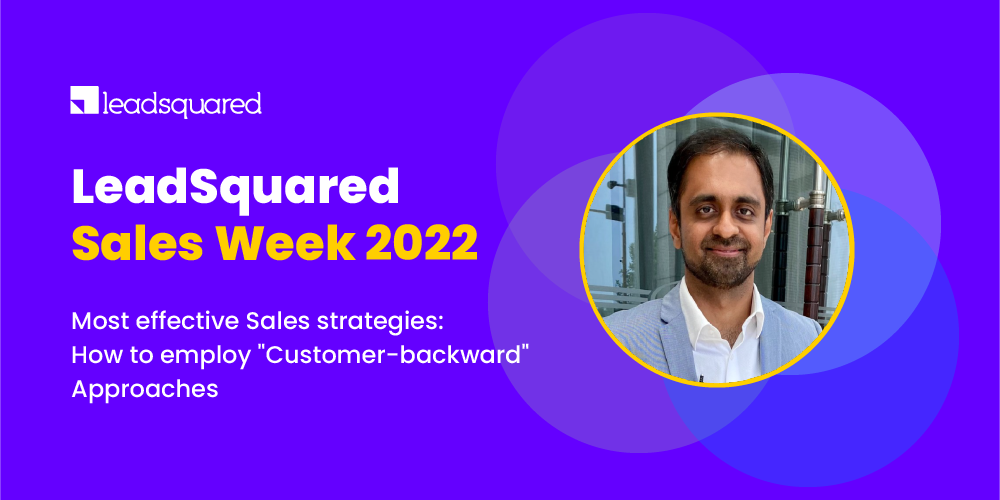What is the finest and most efficient way to develop a sales strategy? There is a lot of advice out there that claims you are prepared as long as you have a written strategy, a reliable procedure, and a bullpen full of people that are familiar with your solution inside and out.
Well, not quite.
In this webinar, Vijay Rajagopal, Head of Sales and BD, Amazon Pay will discuss the most effective sales strategies and how to employ customer backward approaches. This will be a great opportunity for you to learn from a sales expert and get tips on how to improve their own sales strategies.
What Exactly is a sales strategy?
A sales strategy is a written plan for positioning and marketing your product or service to potential customers in a way that sets it apart from your rivals’ offerings.
Sales managers believe that an effective sales strategy should be goal-oriented (31%), data-centric (24%), people-centric (24%), and flexible (20%)
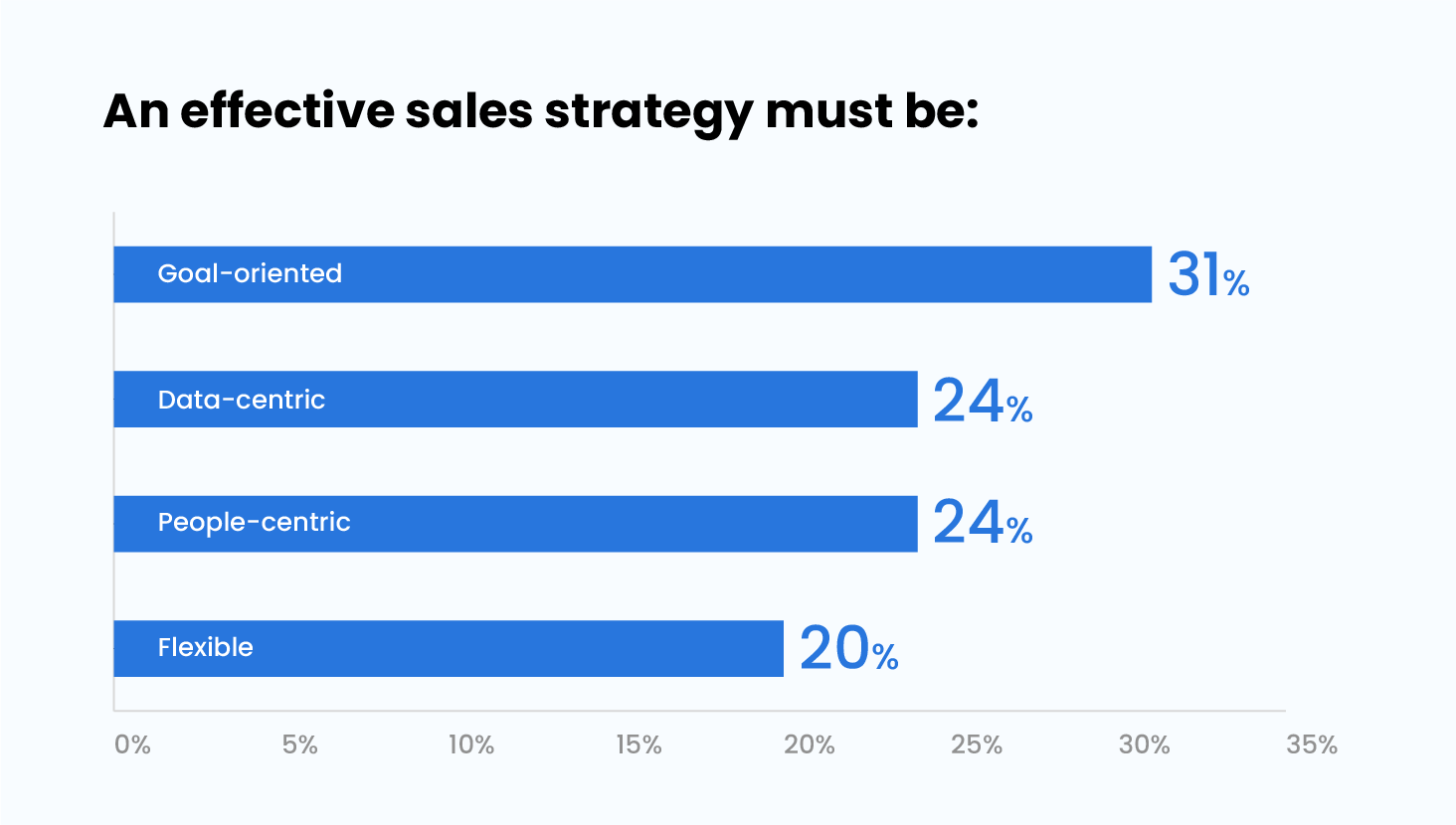
Your organization should receive clear objectives and direction from your sales tactics. They frequently contain important data such as growth objectives, KPIs, buyer personas, sales procedures, team organization, competitor analysis, product portfolio, and particular selling techniques.
We asked 148 sales representatives about how often they review their ongoing sales strategies, and the result was as follows:
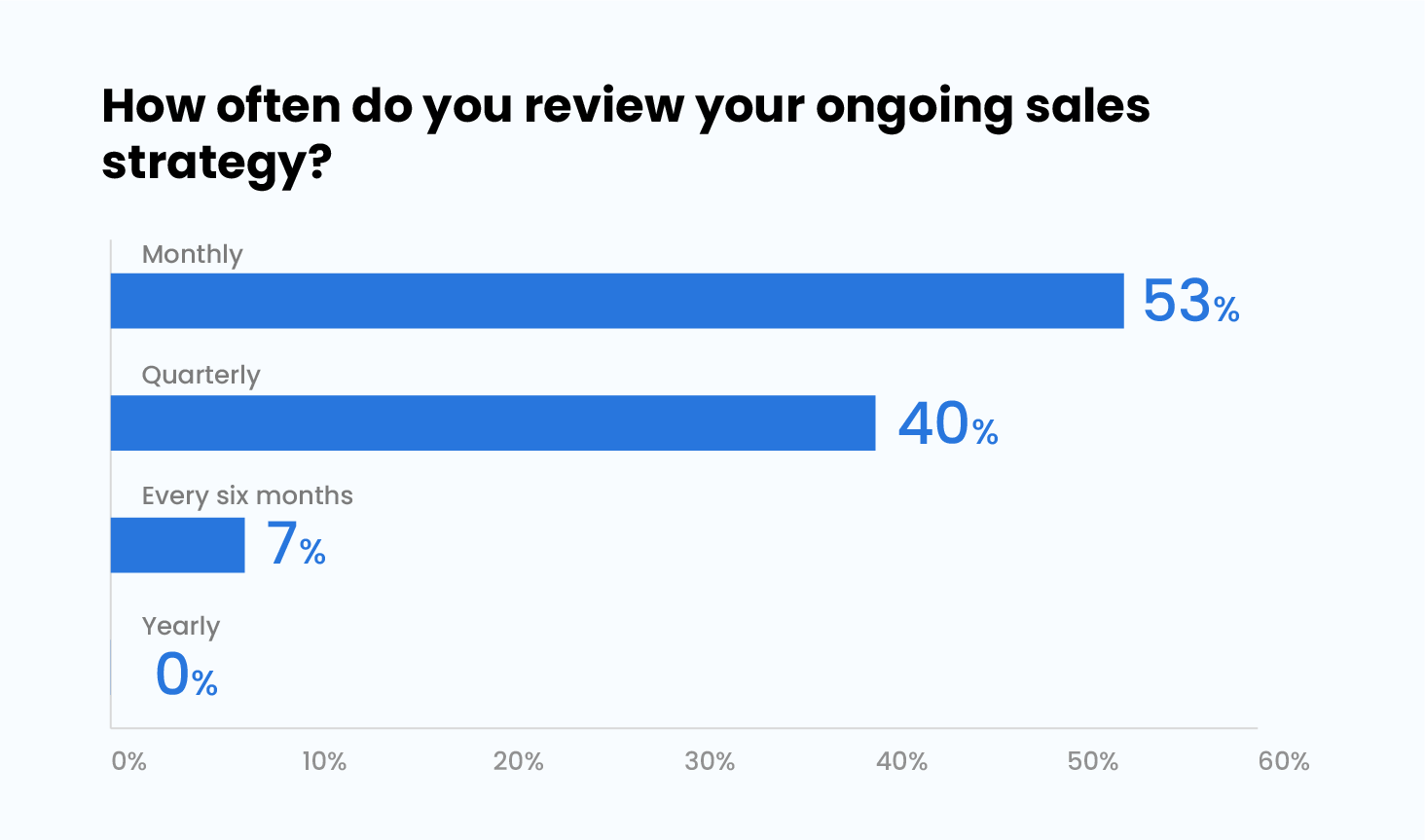
The majority of recommendations from sales review meetings can be used to clarify objectives and maintain alignment among your sales representatives. However, the main problem with most sales plans is that they concentrate too much on your company’s internal operations.
The real abilities required to have effective discussions with customers—as well as the messages salespeople need to be successful—are only given secondary consideration.
Your company’s sales strategy must put a strong emphasis on client conversations if it is to be truly productive. These expertly conducted discussions are what set your business apart from the competition, produce a different purchasing experience for your customers, and convey value to them.
In light of this, the following considerations should be made when developing a sales plan.
Strategic Selling
Strategic Selling helps businesses create thorough sales strategies in challenging B2B selling situations. It makes use of a useful, repeatable sales process that aids in deconstructing complex circumstances into more manageable portions.
Companies can pursue sales possibilities using a single language, standardized methodology, and resource allocation standards thanks to strategic selling. It aids sales teams in deciding when to pursue deals and when to give up on those with a poor chance of success.
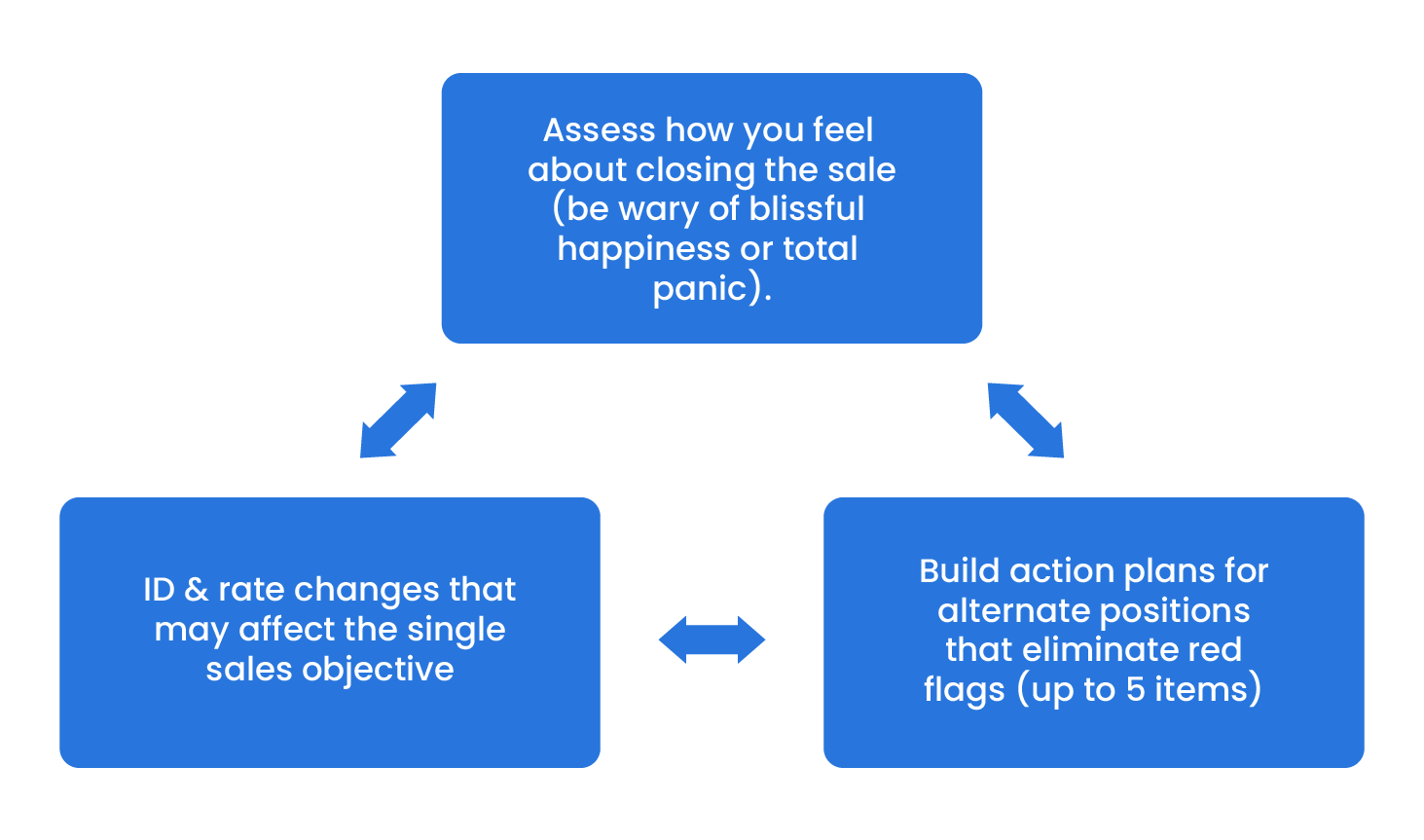
Strategic selling’s main objective is to give salespeople timely access to sufficient information so they can make informed judgments about prospects. Through strategic selling, businesses will have the resources to enable salespeople to concentrate their efforts on prospects with the highest likelihood of turning into lucrative, long-term clients.
This is accomplished by:
- Sorting the various positions inside a potential company into groups based on how they would affect the proposed acquisition.
- Determining each of these roles’ level of support for the deal and recording that support.
- Putting this knowledge to use to seal the deal.
“Sometimes you may find that you’re priced higher than your competitors, but it’s important to stress to your customers that even if you are priced higher but you’re actually better than others”
Vijay Rajagopal, Head of Sales and BD, AmazonPay
Solution selling
Solution selling is a process for selling products or services that focuses on finding and solving customer problems. The goal of solution selling is to create long-term relationships with customers by helping them to address their needs.
It is a customer-focused sales strategy in which the salesperson identifies and articulates the customer’s problem and then recommends a specific product or service to solve it.
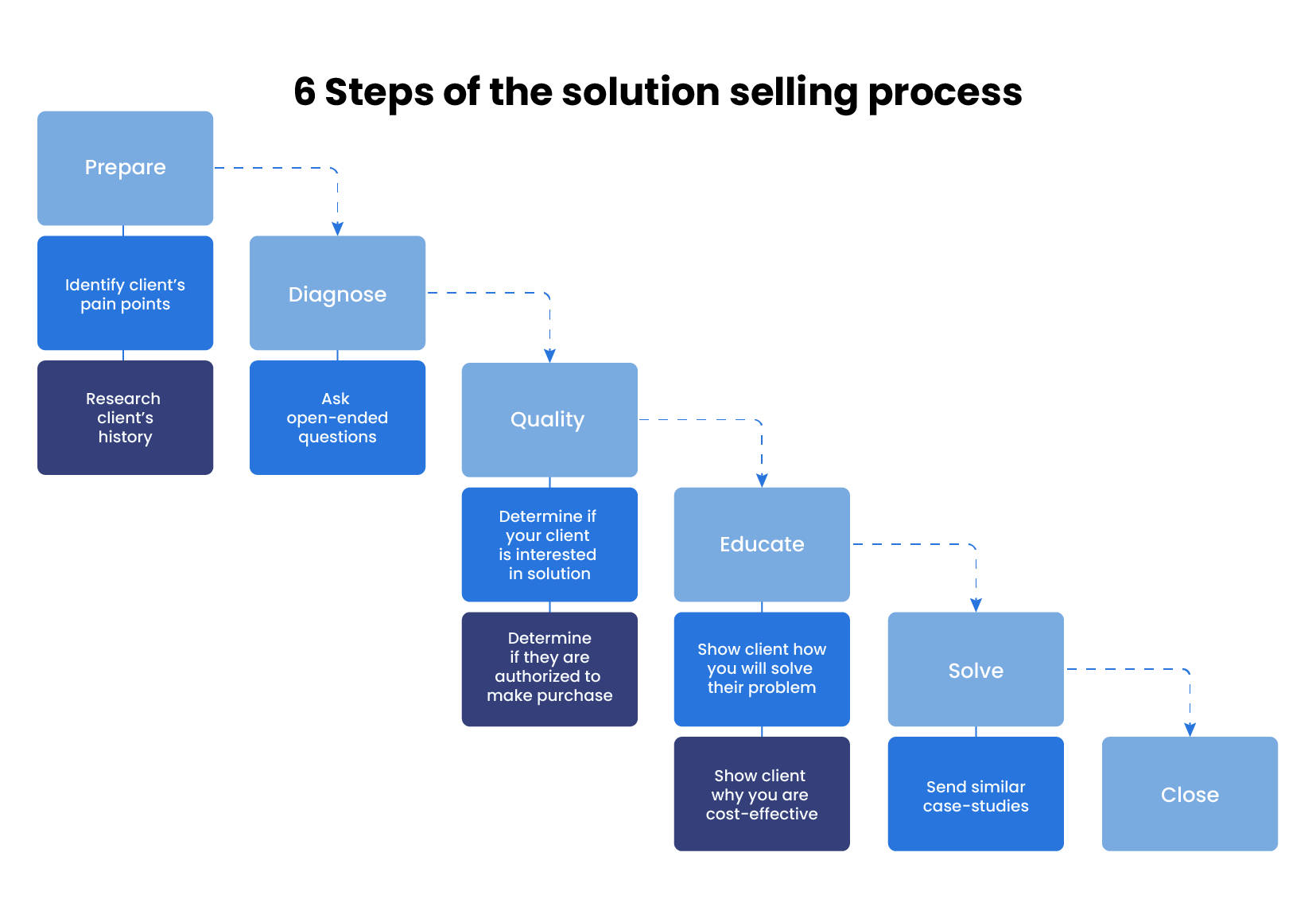
Therefore, the main motive of solution selling is discovering a customer’s pain spots and then offering goods and services that deal with the underlying business issue.
Solution selling improves the selling experience by providing support throughout the entire sales process, which is one of its main advantages. For instance, a representative doesn’t just sell a consumer a product and leaves. A representative will accompany the prospect throughout the whole customer experience while using solution selling to ensure that their specific concerns are resolved by the solution.
Account based selling
Account based selling is a strategy that focuses on selling to a specific list of accounts that have been identified as good prospects for your products or services. This approach is often used in enterprise sales, where each account is worth a large amount of revenue.
In order to be successful in account-based selling, you need to have a deep understanding of the organization you are targeting. This includes understanding the different functions and layers within the organization. You also need to have a multifunctional team from your side that can execute the complex solution you are selling.
Account-based marketing solution
- Identify– Create and maintain a list of target accounts that are actively seeking out your solution. Identify the best channels to contact your audience by enhancing your audience data.
- Target– Reach important decision-makers with personalized message and use multi-channel account-based advertising to grow your best-fit account.
- Engage– Deliver a website experience that is highly tailored, consistent, and relevant to each buyer’s stage of the purchase process. The best part is you can automate engagement campaigns to a great extent. In fact, 20% of our survey respondents have done so.
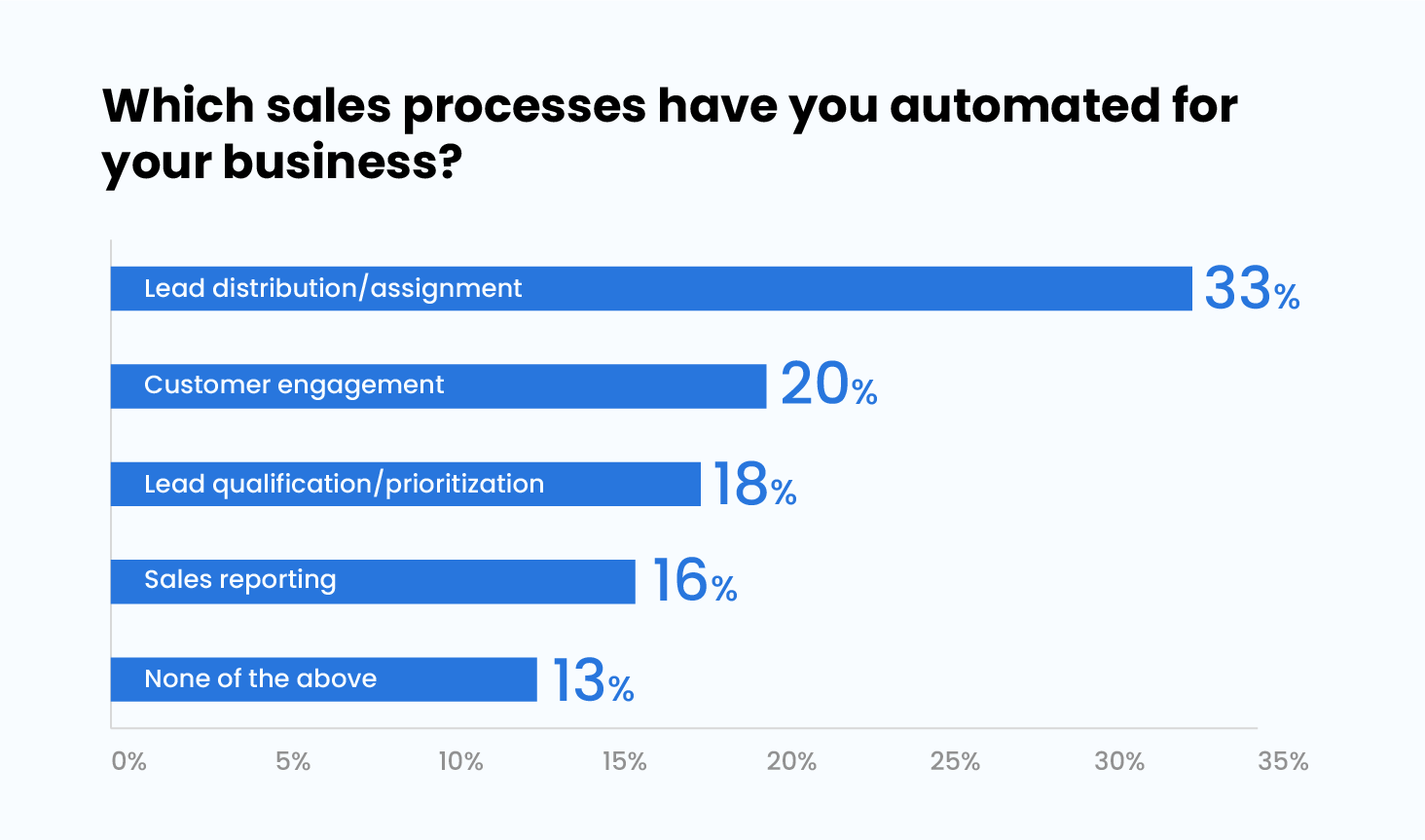
- Convert– Give your sales team access to actionable account analytics and customized talking points for each account’s decision-maker.
Account-based selling is successful because it addresses the interests and worries of all significant participants on a buying committee. Furthermore, an account-based selling strategy delivers prospects custom-made content in a time when personalization is required to stand out in the cluttered content market.
Social selling
The process of leveraging a brand’s social media channels to engage with potential leads and connect with prospects is known as social selling. The strategy might assist companies in achieving their sales goals.
Consider social selling as modern networking. Actively connecting with potential customers on social media can help you be the first brand a prospect considers when they’re ready to make a purchase. Additionally, it can take the place of antiquated sales and relationship-building strategies like cold calling!
You are already practicing the fundamentals of social selling if your brand has a Facebook Business Page, LinkedIn page, or Twitter profile, or is active on any other site.
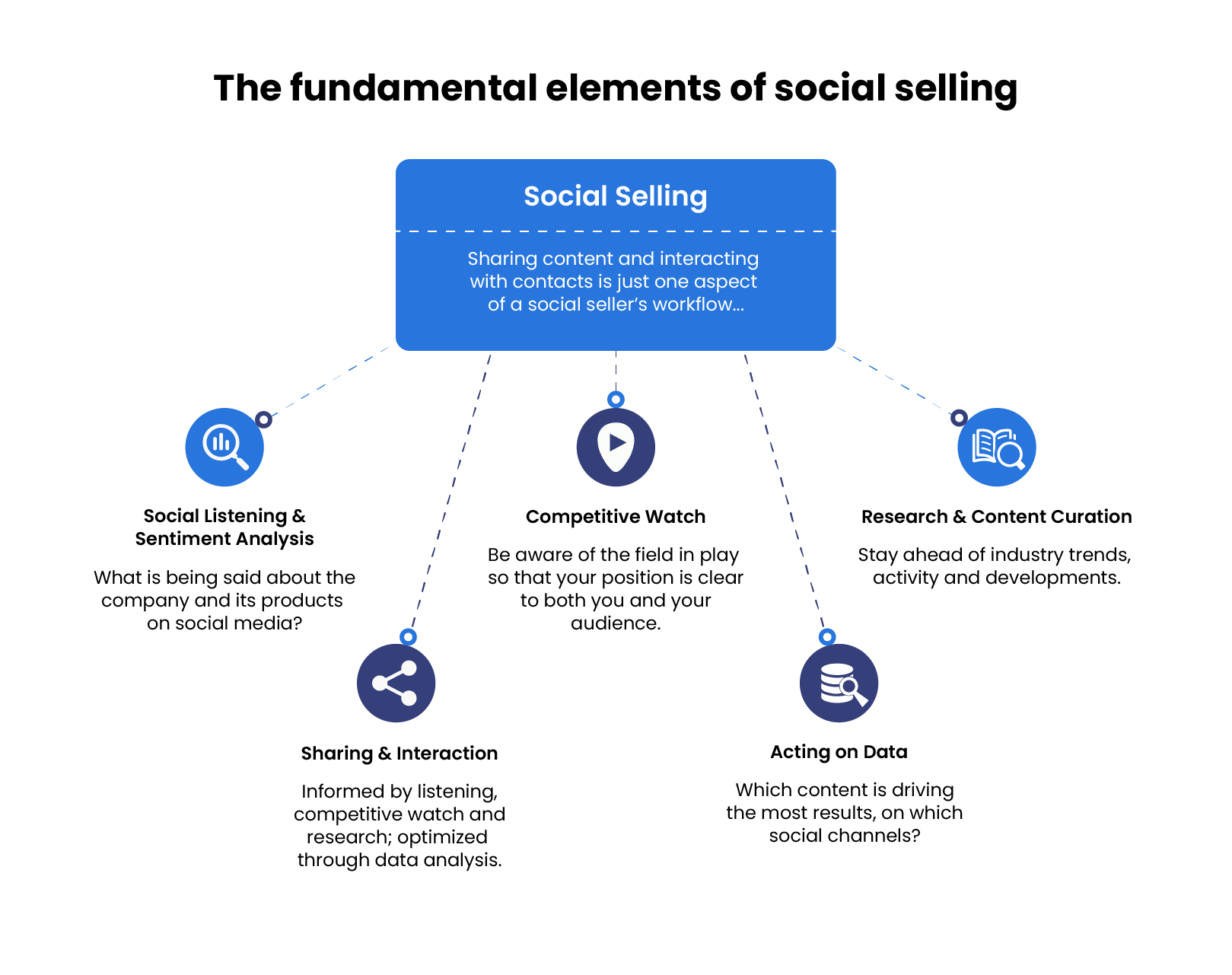
Internal research from LinkedIn Sales Solutions shows that:
- Brands with a high social selling index generate 45% more sales possibilities than those with a low index.
- Businesses are 51% more likely to meet their sales quotas when social selling is given priority.
- Businesses that employ social selling outperform companies that don’t by 78%.
Before we go into details, let’s understand what a customer-backward approach is.
What is a customer backward approach?
In a customer backward approach, the needs of the consumer characterize the “working backward” strategy. This means that, rather than starting with the technology, you should start with the advantages it will have for the clients and the problems it will help them with.
One of the companies that develop new items backward is Amazon. This is especially true when updating existing products. Writing an internal press release outlining the final product and mostly basing it on a particular customer issue is one of its strategies. As a result, Amazon will have something to continually build upon and go back to as it develops.
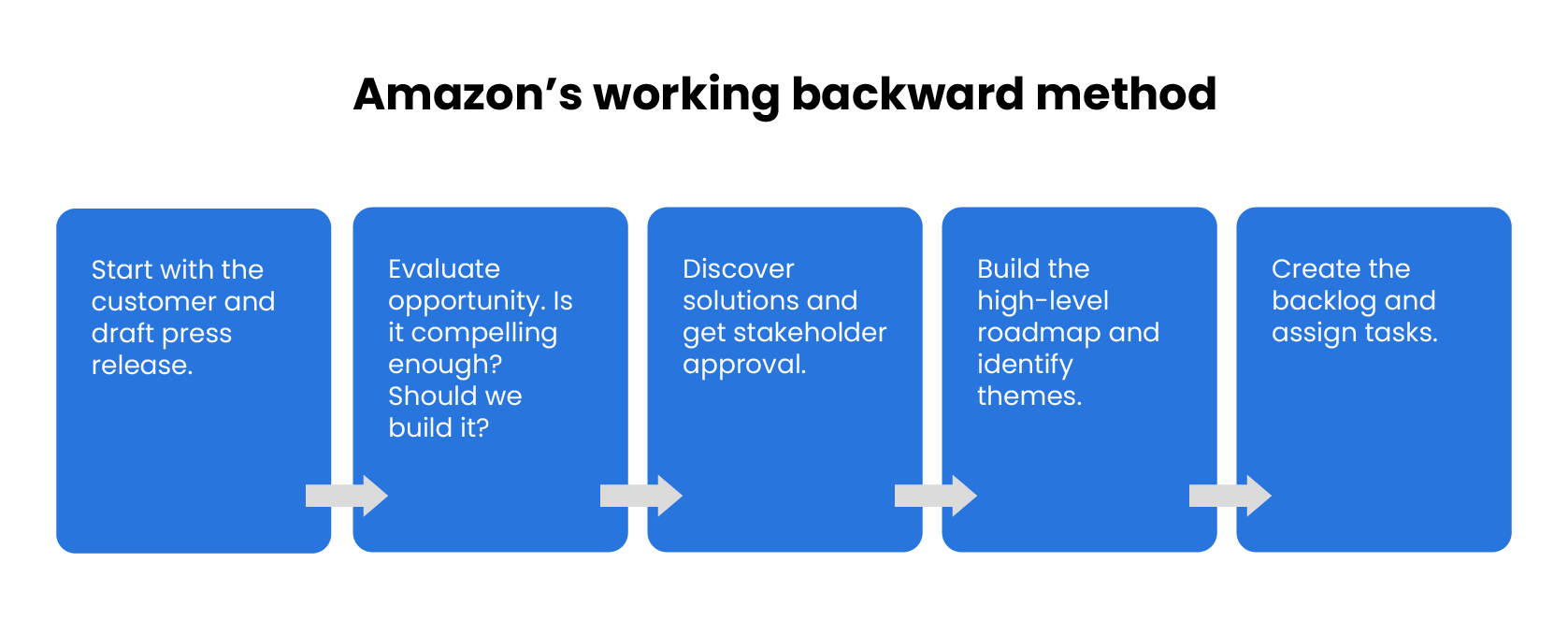
Despite executives paying attention to rivals, according to Amazon, “leaders obsess over customers.” This is especially important when it comes to a company’s positioning within a given industry, as it might be simple to concentrate on premium qualities like competitive pricing or flashy marketing to outperform the competition.
Data is an obvious yet unexpectedly underutilized resource for determining consumer demand. According to research, 75% of corporate data is untouched. However, rather than the acceptance of technology’s significance, this may have more to do with challenges relating to skills and technological obstacles.
Therefore, this presents less of a challenge for the largest businesses, and it is by utilizing this client data that they are able to truly expand on brand or product innovation.
Working backward essentially means that features or products will always have intrinsic value for the consumer since they are anchored in the solution of a particular and concrete problem.
How to solve some sales situations through a customer-backward approach.
- You make a mistake- Maybe you gave the buyer the wrong information, broke a commitment or forgot about an important meeting. Apologize the right way and you might even strengthen your relationship with your prospect because you have proven that you are willing to own your mistakes.
- When your buyer is agnostic– When working with several stakeholders, one or more dislike or distrust you. Don’t simply ignore that person and try to find out what their agnostic needs are, how they fit into the buying process, and the best path to help them meet their goals.
- When your buyer disagrees with you– Excel at challenging client’s thinking and sharing new insights while artfully meeting customers where they are. Do not let the disagreement go too far and try to understand the buyer’s assumptions.
- Your buyers go dark- Dealing with the no-show prospect- Letting buyers break their commitments with no consequence can make you seem less important. Don’t take it personally and do not immediately assume that the client purposely blew you off. Check in to make sure your prospect is okay and suggest another time to meet.
Benefits of customer-backward approaches.
It is obvious that the “working backward” strategy can lead to a better CX (Customer Experience),, but let’s take a closer look at this and what it means in general before we wrap up.
It successfully promotes the brand- Brands can put themselves in the customers’ shoes if they consider why a product is important rather than merely what it is. They will therefore be fully aware of the advantages of the mentioned good or service.
It increases empathy- Brands that approach customer experience (CX) “working backwards” are frequently more empathic than those that do not, with a far deeper grasp of the requirements of the customer as well as the context in which they interact with their product or service.
It develops loyalty- Brands may engage audiences emotionally rather than only on a transactional or functional level by demonstrating a stronger understanding of their demands and pain spots.
Track the customer journey and offer personalized experiences to your buyers with LeadSquared.
Learn how we can help in a free 15-minute demo!
Audience Questions:
People tend to think that the reason they can’t close a sale is that there is something wrong with them. However, this is not the case and there are multiple factors involved in closing a sale.
The main point is that you will make mistakes, but you can learn from them. It is important to be willing to try again and to deep dive and figure out where one can do better.
The key here is that you don’t want to publicize yourself too much when you’re in “stealth mode” (trying to acquire new customers). You can either take a direct approach by reaching out to stakeholders, or a solution-selling approach where you understand the customer’s needs. It’s important to appreciate the early-stage nature of this process and be willing to make mistakes.
Speaker

Vijay Rajagopal
Head of Sales and BD, AmazonPay







